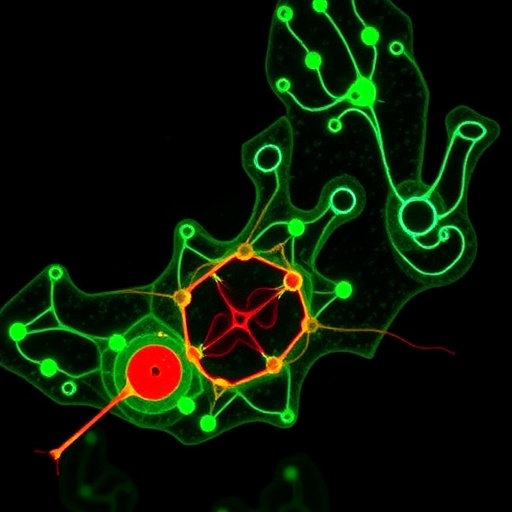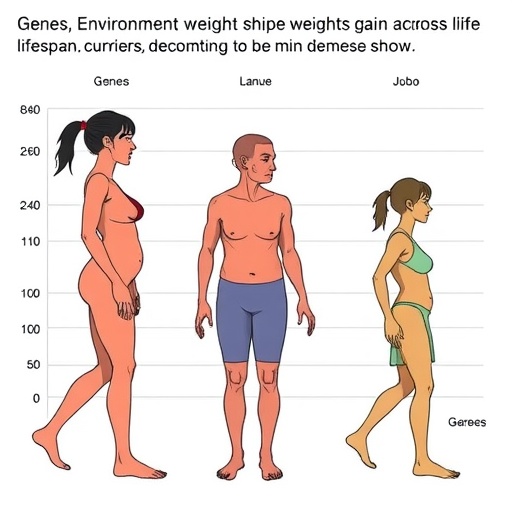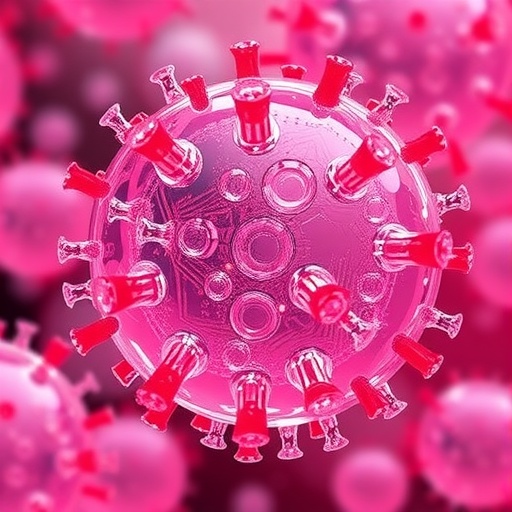
In an exciting breakthrough that could revolutionize therapeutic approaches for neurodegenerative diseases, a team of scientists has unveiled a novel gene therapy strategy that significantly extends survival and ameliorates pathological features in a mouse model of TDP-43 proteinopathy. This innovative approach utilizes adeno-associated virus (AAV)-mediated delivery of RNA interference (RNAi) targeting the ataxin-2 gene, offering a promising pathway for tackling conditions characterized by TDP-43 dysfunction, including amyotrophic lateral sclerosis (ALS) and frontotemporal dementia (FTD).
TDP-43, a DNA- and RNA-binding protein, plays a pivotal role in RNA metabolism and neuronal health. Mislocalization and aggregation of TDP-43 are hallmark features in the vast majority of ALS cases and in a significant subset of FTD patients, making it a focal point of neurodegenerative research. However, treatments directly modulating TDP-43 have been hampered by its essential cellular functions and the complex downstream effects of its pathology. The study conducted by Amado, Robbins, Whiteman, and colleagues pioneers an indirect yet potent way to mitigate TDP-43 toxicity by silencing ataxin-2 expression through an RNAi mechanism conveyed by an AAV vector.
Ataxin-2, though traditionally associated with spinocerebellar ataxia type 2 (SCA2), has recently emerged as a genetic modifier influencing TDP-43-mediated neurodegeneration. Previous genetic and biochemical studies have implicated ataxin-2 as a crucial interactor of TDP-43, modulating its aggregation propensity and cytotoxicity. The authors hypothesized that partial reduction of ataxin-2 levels could alleviate TDP-43’s deleterious effects without invoking the severe side effects linked to complete knockdown.
.adsslot_2U8ydENe1G{width:728px !important;height:90px !important;}
@media(max-width:1199px){ .adsslot_2U8ydENe1G{width:468px !important;height:60px !important;}
}
@media(max-width:767px){ .adsslot_2U8ydENe1G{width:320px !important;height:50px !important;}
}
ADVERTISEMENT
To examine this hypothesis, the research team employed an innovative AAV vector system designed for efficient delivery and sustained expression of RNAi molecules targeting ataxin-2 mRNA. This vector exploits the benign nature of AAVs, their neurotropism, and long-term gene silencing capacity. They administered the AAV-RNAi construct intracerebroventricularly into TDP-43 transgenic mice, a widely accepted preclinical model that recapitulates key aspects of TDP-43 proteinopathy, including motor neuron degeneration and shortened lifespan.
The results were nothing short of remarkable. Mice treated with the AAV-RNAi construct exhibited a significant extension in survival compared to controls. Behavioral assessments revealed marked improvements in motor coordination and grip strength, underscoring the functional preservation achieved by ataxin-2 knockdown. Histopathological analyses corroborated these findings, demonstrating reduced TDP-43 aggregation, diminished neuroinflammation, and preservation of motor neuron populations in the spinal cord and motor cortex.
The mechanism underlying this therapeutic effect appears to revolve around a delicate rebalancing of RNA metabolism and protein homeostasis. Ataxin-2 reduction attenuates pathological stress granule dynamics and mitigates aberrant phase transitions implicated in TDP-43 aggregation. By modulating these molecular pathways, the intervention restores neuronal resilience and slows the cascade of neurodegenerative events.
Importantly, the study provides extensive safety data affirming that the partial suppression of ataxin-2 via RNAi does not induce overt toxicity or adversely affect normal neuronal function. This addresses a critical concern given that ataxin-2 also engages in physiological roles within RNA processing networks. The targeted and tunable nature of RNAi delivered by AAV vectors offers an optimal therapeutic window, maximizing efficacy while minimizing risks.
The translational implications of these findings are profound. Gene therapy platforms leveraging AAV vectors are already established as feasible for human use, with several approved therapeutics for monogenic diseases. This study’s demonstration that such a platform can be repurposed to deliver RNAi against a modifier gene in complex neurodegeneration charts a new frontier in precision medicine. It opens up opportunities for bespoke gene silencing treatments tailored to genetic profiles and disease mechanisms.
Moreover, this strategy could synergize with emerging TDP-43-targeted therapies, combining upstream modulation of toxic aggregations with downstream correction of pathological cascades. Such combinatorial approaches may ultimately yield durable clinical benefits for patients afflicted with ALS, FTD, and related disorders, diseases for which effective treatments remain limited.
Beyond the immediate clinical potential, the work by Amado and colleagues deepens our understanding of the pathological interplay between TDP-43 and ataxin-2. It highlights the utility of modulating protein interactors as a therapeutic avenue, shifting the paradigm from directly targeting the aggregation-prone proteins themselves toward their regulatory networks. This may inform intervention strategies across a spectrum of protein misfolding diseases.
The utilization of RNAi technology also underscores the escalating precision of genetic medicine. By enabling selective gene silencing with spatial and temporal control, RNAi therapies offer a powerful tool to manipulate disease modifiers without permanent genomic alterations. AAV vectors’ capacity for targeted neuronal delivery and sustained expression further enhances the therapeutic profile.
Technically, the study exemplifies cutting-edge vector design and validation. The team engineered an AAV serotype optimized for central nervous system transduction, incorporating a robust promoter to drive RNAi expression within affected neuronal populations. Rigorous in vivo dosing studies established an effective concentration that balances potent knockdown with tolerability. The longitudinal experimental framework, incorporating molecular, behavioral, and histological endpoints, paints a comprehensive picture of therapeutic impact.
This breakthrough also prompts consideration of the challenges ahead. Scaling this therapy for human application will demand meticulous optimization of vector production, delivery routes, dosing parameters, and long-term safety monitoring. Potential immunogenicity of viral vectors and off-target RNAi effects remain important areas for further investigation. Nevertheless, the preclinical success lays a strong foundation.
The broader neuroscientific community is likely to find this approach inspiring. It exemplifies the synergy achievable when gene therapy intersects with detailed mechanistic insights into disease biology. Such convergence propels us toward the long-sought goal of modifying neurodegeneration’s relentless course.
In summary, this landmark work delineates a transformative gene therapy strategy leveraging AAV-mediated RNAi targeting ataxin-2 to rescue survival and neuropathology in a TDP-43 mouse model. The therapeutic promise, mechanistic sophistication, and translational readiness combine to illuminate a hopeful path forward for devastating neurodegenerative diseases marked by TDP-43 dysfunction. As the scientific and clinical fields advance, such innovations will be vital in shaping the future landscape of neurotherapeutics.
Subject of Research: Neurodegeneration, TDP-43 proteinopathy, RNA interference, gene therapy
Article Title: AAV-based delivery of RNAi targeting ataxin-2 improves survival and pathology in TDP-43 mice
Article References:
Amado, D.A., Robbins, A.B., Whiteman, K.R. et al. AAV-based delivery of RNAi targeting ataxin-2 improves survival and pathology in TDP-43 mice. Nat Commun 16, 5334 (2025). https://doi.org/10.1038/s41467-025-60497-8
Image Credits: AI Generated
Tags: AAV gene therapy for neurodegenerative diseasesadeno-associated virus vector deliveryamyotrophic lateral sclerosis researchataxin-2 as a genetic modifierextending survival in TDP-43 mouse modelfrontotemporal dementia gene therapyneuroprotective approachesRNA interference targeting ataxin-2role of TDP-43 in neurodegenerationsilencing ataxin-2 expressionTDP-43 proteinopathy treatmenttherapeutic strategies for ALS and FTD





